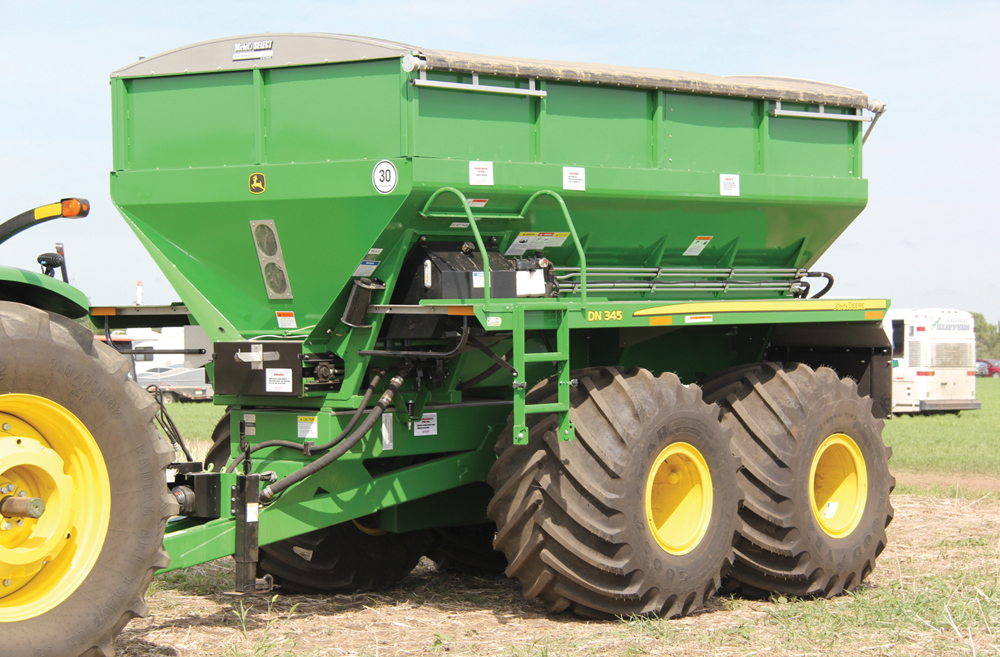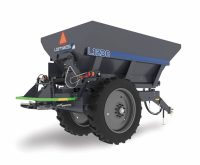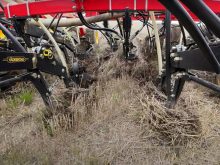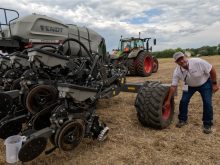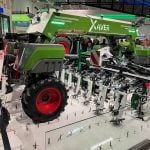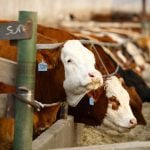In past years, the uses for dry-product broadcast spreaders have declined. Aside from forage growers, most producers have turned to more targeted fertilizer placement alternatives. But with the introduction of slow-release nitrogen products and the difficulty of handling large amounts of fertilizer in the short spring seeding season, many are re-examining their placement alternatives. So broadcast spreaders are once again garnering interest across the prairie.
But the dry-product broadcast spreaders on the market now are much different machines than they were a decade or two ago. Technology has caught up with them too.
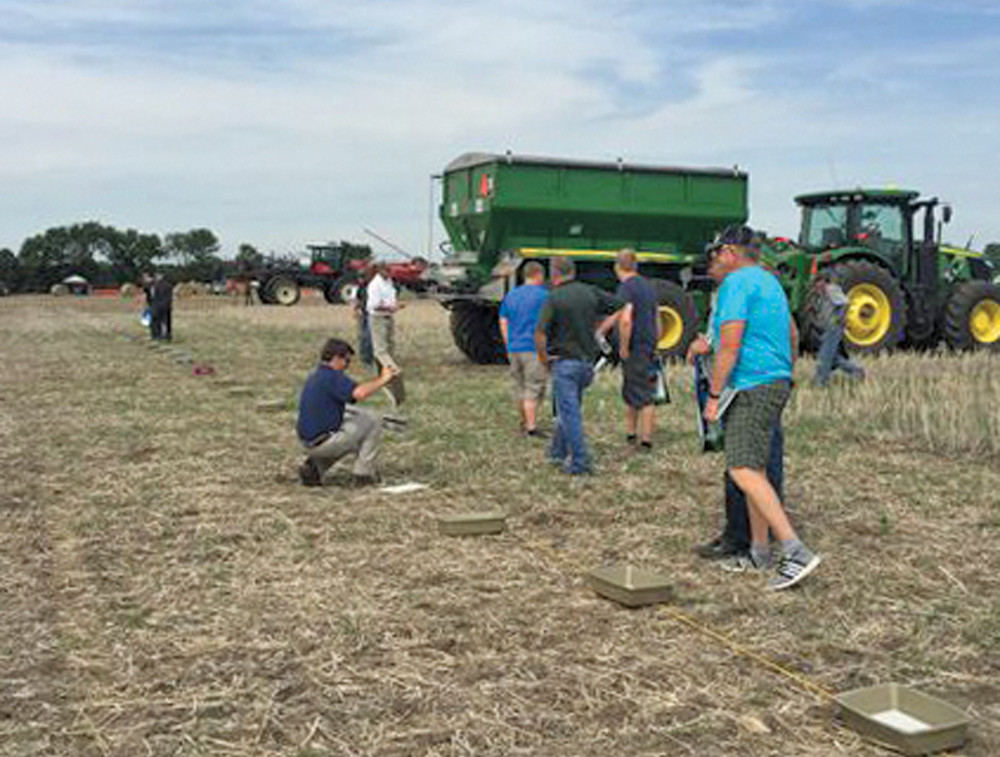
“Today the technology we have versus what we previously had has changed the way product is being broadcast across the country,” explained Craig Fenstermaker, product specialist with Highway Equipment, who was demonstrating one of New Leader’s spreaders at the Ag in Motion farm show in July.
“Previously-designed spreaders were PTO driven, so 540 r.p.m. spinner speeds,” he continued. “Our spinner discs, the way they were designed, they’d broadcast product high into the air, 10 or 12 feet. So we had high trajectory and low velocity on our product. A 10 m.p.h. wind would blow a pattern apart. That had to change.”
If you buy a dry product spreader from any of the major brands today, it’s probably built by New Leader, regardless of what name appears on the side. And the company has incorporated several design changes into all its models to change that outdated and inefficient broadcast pattern. Most notably, the spinner discs have been reshaped to change how product is thrown.
“Previous spinners, the way they were designed, was an open centre disc,” continued Fenstermaker. “The fins on the disc were short. At 540 r.p.m. We had a 40 to 60 foot spread width. But as we increased the spinner speed to anywhere from 700 to 1,000 r.p.m., that open centre spinner disc created a problem. So the design of the spinner disc today on the New Leader spreader is a full fin from the outer perimeter to the very centre. It allows infinite adjustment on the machine to accomodate (various) products.”
Read Also
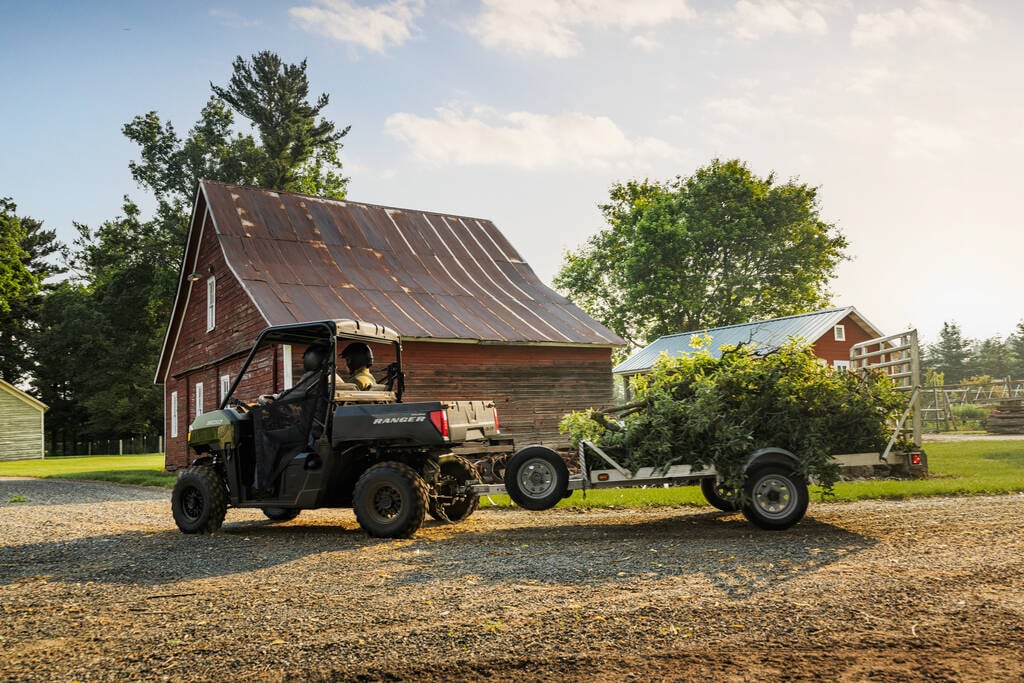
Polaris’ new Ranger 500 aims for simple, affordable
Farmers seeking a smaller, simpler, lower-priced utility vehicle for quick trips to the field or around the farmyard get a new option in Polaris’ Ranger 500 side-by-side UTV, Scott Garvey reports.
The conveyors that move product back to the spinner discs are now electrically controlled and hydraulically driven, rather than mechanical ground drive. Inputting data into a tractor’s monitor allows the operator to pick a set target speed and the spreader will deliver the correct volume to the spinner discs. And that also better accommodates today’s higher operating speeds.
“Once we set that speed in our controller, we now have repeatability in our spread widths,” he said. “With auto guidance it allows us to be consistent in our spread widths, so it allows us to avoid skips and misses as we go through the field. As we increase or decrease speed, the conveyor is automatically adjusting to those application rates. Today with those (higher) speeds and being electrically controlled, we have repeatability in all that we do.”
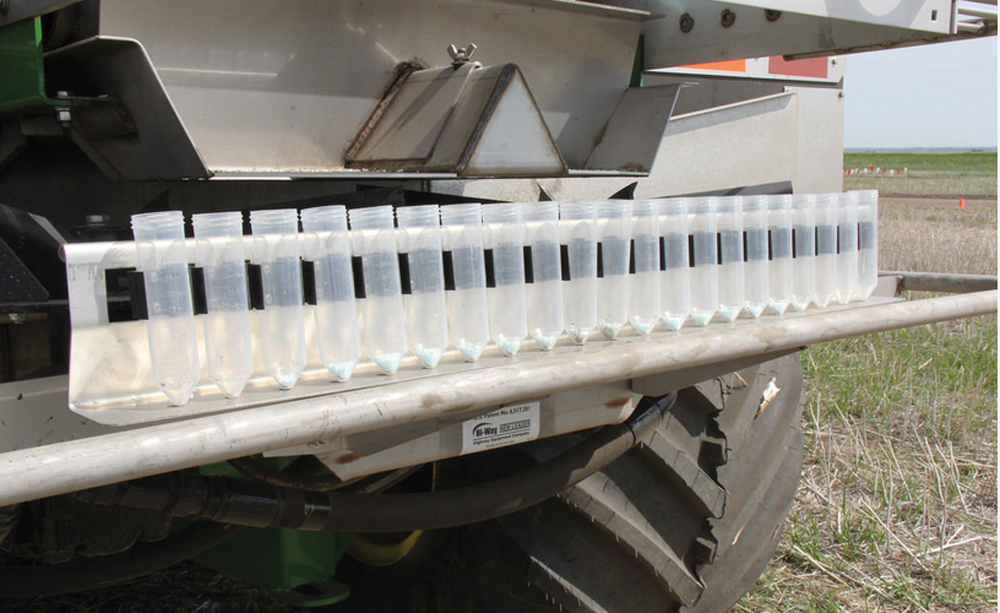
Fenstermaker said the company has conducted extensive testing on how various types of dry product react when put through a spreader. Based on that data, the company offers buyers charts and measurement kits to help them calculate exact pattern spreads for the types of blends they’re broadcasting.
“Products will only broadcast so far because of their size and the structural integrity of that granule, He said. “So today when you get a New Leader spreader there are two kits. A pan test kit that allows us to test for broadcast widths. There is also an SGN kit that allows us to understand the product capabilities. We’ll take a sample of the product and put it into the SGN scale, shake it out and come up with a size. With that and the documentation we have, we know what the spread width will be. We’re also able to test the structural integrity of the product by crushing a granule. It allows us to program the spinner speed into the controller to get our maximum spread width without pulverizing the product.
“(Broadcasting dry product) is not what it used to be,” he said. “It’s altogether different, allowing us to be much more efficient in our operation.”


